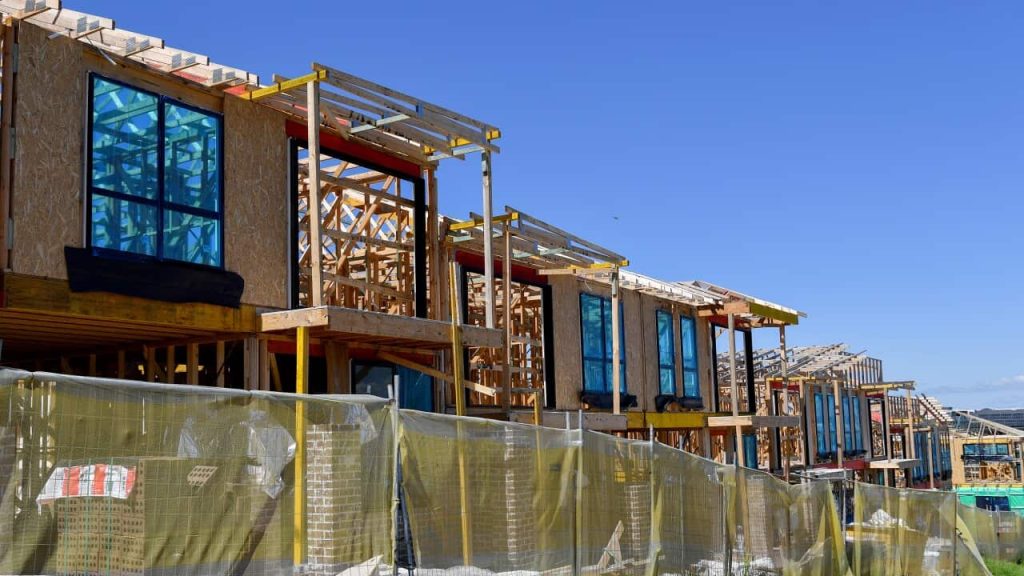Australia’s Home-Building Headache: Why It’s Taking Longer and Costing More
Over the past five years, Australian home builders have struggled with budget overruns and delays in construction timelines.
An Australian Bureau of Statistics (ABS) analysis, released this week, examined new home construction between July 2019 and June 2024 and shed light on the factors behind these challenges.
Dwelling Approvals Soar, then Drop Amid Rising Costs
Following a decline in total sector dwelling approvals (174,528) and commencements (172,959) in 2019-2020, approvals and commencements surged in the second half of the 2020-2021 financial year with the introduction of low interest rates and government stimulus programs.
“When interest rates are low that increases demand for borrowing and purchasing of housing,” Owen said.
Responding to the COVID-19 pandemic, the federal government announced the HomeBuilder scheme, which provided eligible owner-occupiers with a grant of $25,000 to build a new home or renovate existing ones.
Owen said the design of the scheme meant the number of grants that could be provided was unlimited, but it was limited to a certain timeframe — new applications closed in April 2021.
“The design of housing schemes like that means that if you’re considering buying a home, you tend to bring forward your purchasing decision if you can to be within the window of the scheme,” she said.
“It created excessive demand because it concentrated more new home purchasing decisions within the period of the scheme. That only added to demand pressures at a time when the inputs to the supply of housing were constrained.”
- Approvals for private new houses increased for all states and territories, with approvals and commencements peaking in June 2021, data shows.
- However, since then, approvals and commencements have declined each year due to rising interest rates and construction costs.
A Bottleneck of New Houses Under Construction
Rapid approval and commencements meant a bottleneck of new homes under construction — many of them in regional areas due to changing migration patterns during the pandemic.
Commencements surged in June 2021, leading to competing demand and shortages of trades and materials. This imbalance resulted in projects stalling during various stages of construction.
Extreme weather conditions and construction industry insolvencies didn’t help either, causing further delays in building.
- ABS data reveals dwellings under construction peaked in March 2023 at 104,315 dwellings. The number is 48 per cent higher than the pre-pandemic record of 70,306 in June 2018.
- Western Australia has experienced the worst bottleneck of builds of all states and territories, with completion times increasing from around 6 months and 4 weeks in September 2019 to 16 months and 1 week in March 2024.
Rising Cost of Construction
During the COVID-19 pandemic, the demand for construction significantly increased. Owen said the strong demand — in part created through the HomeBuilder incentive and record low interest rates — along with disruptions in the global supply chain, the rising costs of materials and freight, and labour shortages contributed to more expensive homes.
“The demand for housing far outstripped the amount of material and labour that’s been available to build it,” she said.
“When you have excessive demand for those components, it leads to an increase in price … We estimate that since the onset of the pandemic, construction costs for a detached house have risen over 30 per cent.”
The average cost of completed homes in Australia rose from $345,410 in 2019-2020 to $443,828 in 2023-2024, with Queensland experiencing the highest average annual increase of 9.9 per cent, followed by Tasmania at 8 per cent.
- Meanwhile, Western Australia experienced the lowest cost growth rate, with costs increasing at an average annual rate of 5.2 per cent. However, the state’s longer completion times may explain the slower rise in construction costs.
Construction Company Bankruptcies
With high demand for new homes, one might expect construction companies to be profiting, but as a University of New South Wales (UNSW) article on the industry puts it, “something’s broken in the residential construction sector”.
Many new homes are built under fixed-price contracts, where construction companies agree to complete a property for a set price.
According to ABS, the situation became problematic between 2020 and 2023, as rising demand and costs put pressure on these agreements.
The increase in costs made it difficult for companies to maintain margins, exacerbating the bottleneck in home construction.
The UNSW article further states that while Australia needs new homes due to high immigration and a trend of fewer persons per household, “residential companies are going into liquidation at an alarming rate”.
Factors such as disruptions due to COVID-19, the rising costs of construction materials, and labour shortages are blamed for insolvencies in the article; however, low-profit margins and fixed-price contracts seem to be at the heart of these.
Negative cash flows then resulted in unpaid suppliers and unfinished homes.
What’s Next for the Construction Sector?
Owen said the impacts of the COVID-19 pandemic are still being felt in the construction sector.
“Labourers are trying to bargain for their wages to keep better pace with the cost of living and inflation,” she said.
“Some material costs have come down a little bit, and the pace of increase in materials is slowing. But overall, the cost of construction is still rising. It’s just rising at a bit of a slower pace now.
She also acknowledged the “cyclical” nature of construction demand; when construction costs become too high, both buyers and developers get put off building and buying new homes.
“Eventually, what that will do is start to free up capacity.
“There’ll be fewer new dwelling approvals in the pipeline, and all of those labourers and materials that were so stretched across all these different projects, the volume starts to come down and that eases some of the capacity issues.”
Owen said “part of the resolution” to what’s being seen in the construction space is “gritting our teeth” and waiting out the cycle.

